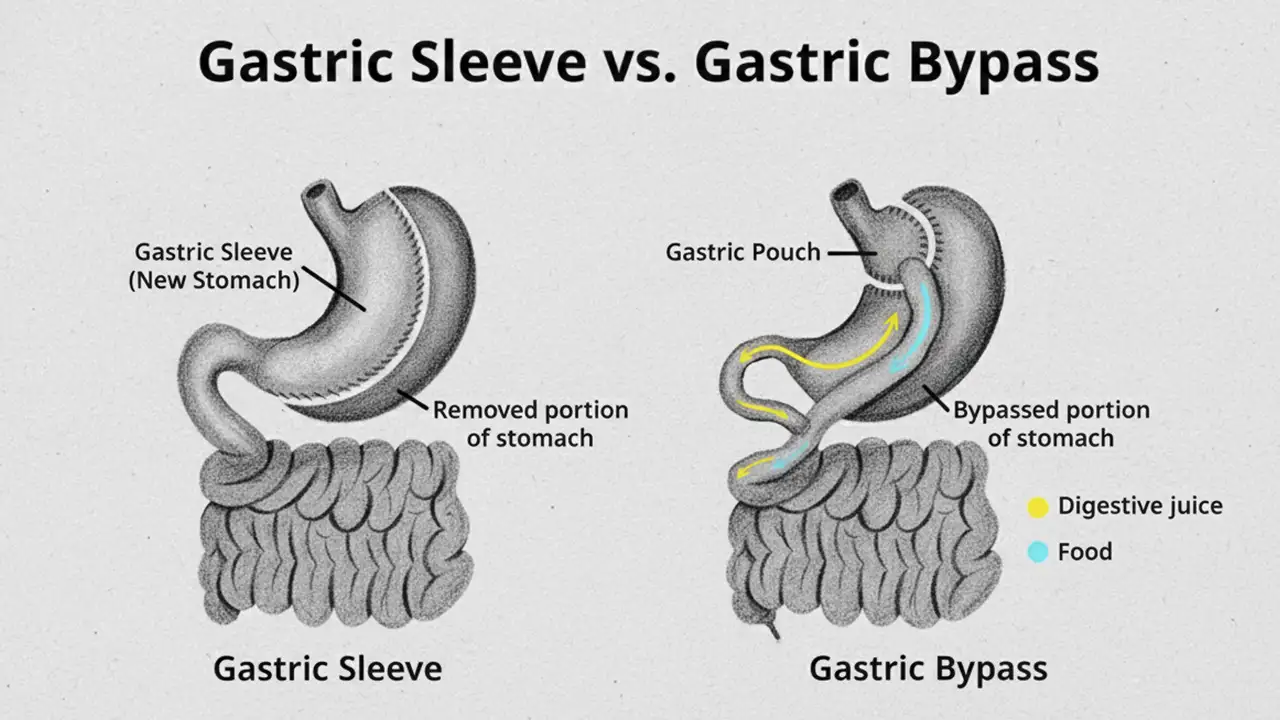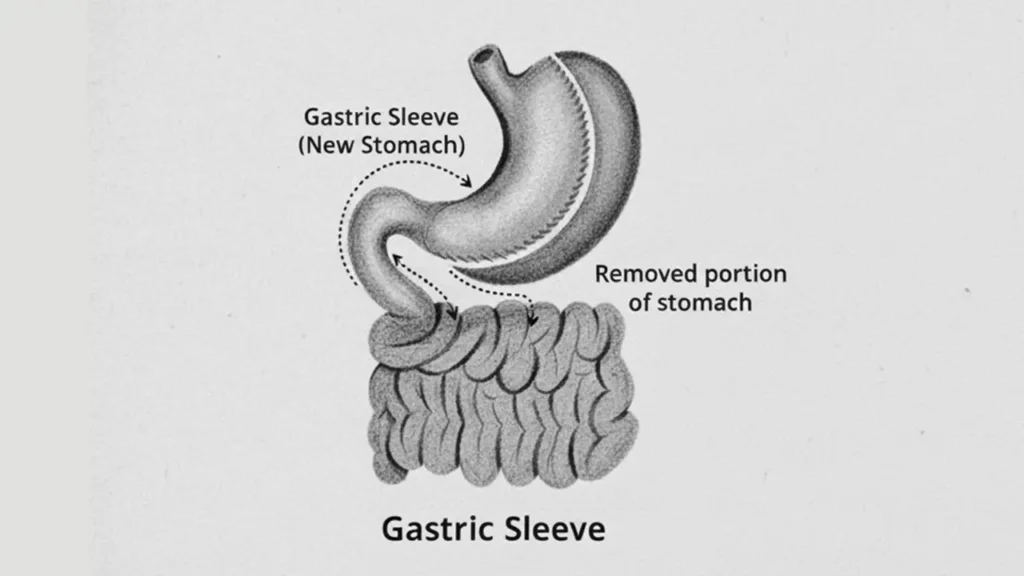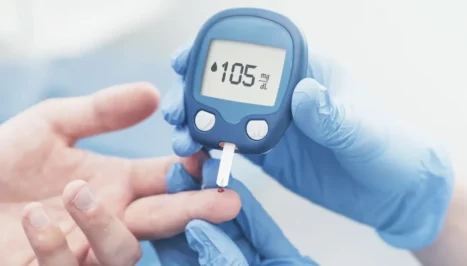Sleeve or Bypass: Comparing Advantages and Disadvantages

For individuals considering weight loss surgery, there are many options on the table. Sleeve, bypass, mini bypass, SADI-S, plication, banding, intestinal bypass, and more are just a few of these methods. Among them, sleeve gastrectomy and gastric bypass surgery are the most well-known. In this article, we explain both procedures in simple terms and answer the question: Is sleeve or bypass better?
Comparing Sleeve Gastrectomy and Gastric Bypass: Definition and Nature
Sleeve Gastrectomy
Sleeve gastrectomy is one of the newer surgical methods for weight loss. The term “sleeve” refers to the tube-like shape of the stomach left after removing a large portion of it. After the surgery, only a small, sleeve-shaped stomach remains.
The goal of sleeve gastrectomy is to reduce stomach volume so that patients eat less. This procedure can eliminate up to 80% and sometimes even 100% of excess weight.

For a complete guide to sleeve gastrectomy from start to finish, visit “What is Sleeve Gastrectomy?”
Gastric Bypass Surgery
Schematic image of food passage before and after gastric bypass surgery
Gastric bypass is an older method of weight loss surgery. Unlike sleeve gastrectomy, a large portion of the stomach is not removed. Instead, the goal is not only to reduce food intake but also to decrease calorie absorption.
This is achieved by bypassing a large part of the stomach and small intestine. The term “bypass” literally means to take a shortcut, and in this surgery, part of the stomach is bypassed.

For a full guide to gastric bypass surgery, visit “What is Gastric Bypass?”
Comparing Sleeve Gastrectomy and Gastric Bypass: Procedure
How Sleeve Gastrectomy Is Performed
The procedure involves removing most of the stomach and creating a narrow pouch that connects the esophagus to the small intestine. The new stomach pouch is stapled, and the rest of the stomach is removed. Some surgeons perform additional steps to reinforce the staple line, though the effectiveness of these steps is not fully proven.
How Gastric Bypass Surgery Is Performed
Gastric bypass surgery, also known as Roux-en-Y, is performed as follows:
- Cutting and stitching the upper part of the stomach to create a small pouch at the end of the esophagus.
- The remaining stomach remains connected to the start of the small intestine but is bypassed.
- A lower section of the small intestine is cut and connected to the new stomach pouch — this part is called the Roux limb.
- The end of the bypassed intestine is then connected to the Roux limb, allowing digestive juices to mix with food.
Comparison Table: Sleeve vs Bypass
| Aspect | Sleeve Gastrectomy | Gastric Bypass |
|---|---|---|
| Procedure Complexity | Less complex | More complex, higher risk |
| Weight Loss Rate | Slower, gradual | Faster, significant in first year |
| Hunger Reduction | Significant (ghrelin removed) | Moderate |
| Vitamin/Nutrient Needs | Lower | Higher |
| Acid Reflux | May worsen | Often improves |
| Long-Term Data | Less long-term research | Extensive, well-studied |
Advantages of Gastric Bypass
Many consider gastric bypass as the “gold standard” because:
- It has been performed for decades, with extensive research on outcomes and complications.
- Bypassing part of the intestine reduces calorie absorption.
- It leads to greater weight loss compared to sleeve.
- It is preferred for patients with a history of acid reflux, as reflux is significantly reduced after bypass.
Advantages of Sleeve Gastrectomy
Sleeve gastrectomy offers several advantages:

- Reduced appetite due to removal of the lower stomach, where hunger hormones are produced. Some patients report very little hunger for up to six months.
- Simpler and faster surgery with fewer complications.
- Lower vitamin requirements compared to bypass.
- Slower, gradual weight loss, which may help prevent sagging skin and make the weight loss appear more natural.
Risks and Complications
Sleeve Gastrectomy
- Bleeding, infection, or blood clots
- Staple line leakage
- Irreversible procedure
Gastric Bypass
- Bleeding, infection, or blood clots
- Staple line leakage
- More invasive and complex
- Dumping syndrome
- Potential nutrient deficiencies
- Ulcers, gallstones, bowel obstruction, reflux

Overall, sleeve gastrectomy is considered safer with fewer surgical risks than bypass surgery.
Similarities Between Sleeve and Bypass
Both surgeries aim to achieve an ideal weight and maintain it. They reduce food intake and help patients feel full. Both procedures can improve obesity-related conditions such as diabetes, high blood pressure, and sleep apnea.
Diet After Surgery
Patients must follow a post-surgery diet for several weeks and permanently adjust their lifestyle. Neither procedure is reversible. Both can significantly improve obesity-related health conditions.

Hospital Stay
Patients typically stay 2–3 nights in the hospital. Recovery varies by individual, but most patients return to daily activities after 2 weeks, while some may require up to 4 weeks for full recovery.
Sleeve or Bypass: Which Is Better?
Determining whether sleeve or bypass is better is complex. Advantages and disadvantages must be weighed individually. There is no single “best” surgery; what is optimal for one person may not be for another.
You should ask yourself whether sleeve gastrectomy or gastric bypass fits your specific condition. Consulting a qualified bariatric surgeon and reviewing your test results is essential. After a specialized consultation, your surgeon can recommend whether sleeve or bypass is the most suitable for you.

Frequently Asked Questions About Sleeve or Bypass Surgery
A: Sleeve gastrectomy is generally considered safer with fewer surgical risks, while gastric bypass is more complex and carries higher risk but may result in greater weight loss.
A: Gastric bypass usually leads to faster weight loss, with most excess weight lost within the first year. Sleeve gastrectomy results in slower, gradual weight loss over two years, which may be easier on the skin and appearance.
A: Gastric bypass is often preferred for patients with acid reflux, as it significantly reduces reflux symptoms. Sleeve gastrectomy may worsen reflux in some cases.
A: The best choice depends on your medical history, weight loss goals, and individual health conditions. A consultation with a qualified bariatric surgeon is essential to determine which procedure is suitable for you.




